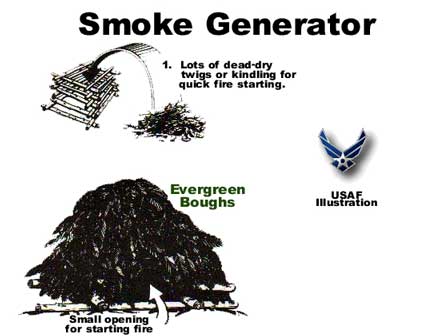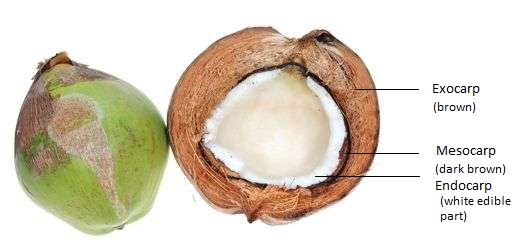You can build a so called "smoke generator" and feed it with certain material to specifically generate white smoke. It's basically a survival technique.

First, make a platform from dead wood, and stack it as shown in the illustration.
Stack the wood 4 or 5 high, and make it fairly large, perhaps 4 feet
in length. Then cover it with evergreen boughs, either pine or cedar,
and have an opening below where you can insert a burning brand, limb,
or other source of fire.
When ignited, use caution and move away instantly because it will
flare up suddenly. The smoke produced will be a dense white smoke and
the flames will be high. You could easily be burned, so ignite the
boughs and quickly move away.
From Simple Survival - How to use a smoke generator
To generate white smoke, feed it with:
- Grean leaves
- Moss
- A little (!) water
- Grass
- ...
After you have a good fire going, add grass and green sticks and
branches to your fire. This will smother the flames and create a
dense, white smoke.
From "How to send a smoke signal"
Try to create a color of smoke that contrasts with
the background; dark smoke against a light background and vice versa.
If you practically smother a large fire with green leaves, moss, or a
little water, the fire will produce white smoke. If you add rubber or
oil-soaked rags to a fire, you will get black smoke.
From Wilderness Survival - Signaling Techniques
Further reading
Comprehensive article from Wilderness Survival:
During daylight, build a smoke generator and use smoke to gain
attention (Figure 19-2). The international distress signal is three
columns of smoke. Try to create a color of smoke that contrasts with
the background; dark smoke against a light background and vice versa.
If you practically smother a large fire with green leaves, moss, or a
little water, the fire will produce white smoke. If you add rubber or
oil-soaked rags to a fire, you will get black smoke.
In a desert environment, smoke hangs close to the ground, but a pilot
can spot it in open desert terrain.
Smoke signals are effective only on comparatively calm, clear days.
High winds, rain, or snow disperse smoke, lessening its chances of
being seen.

